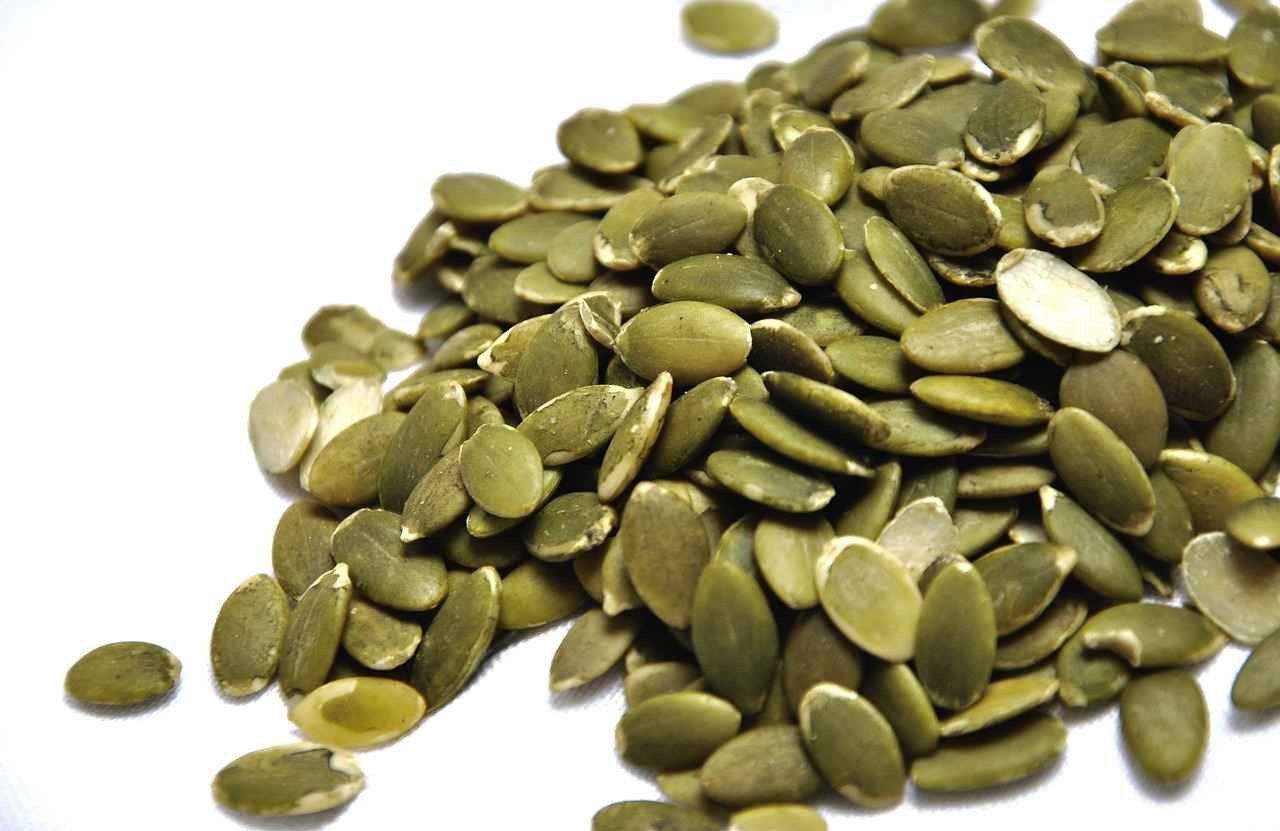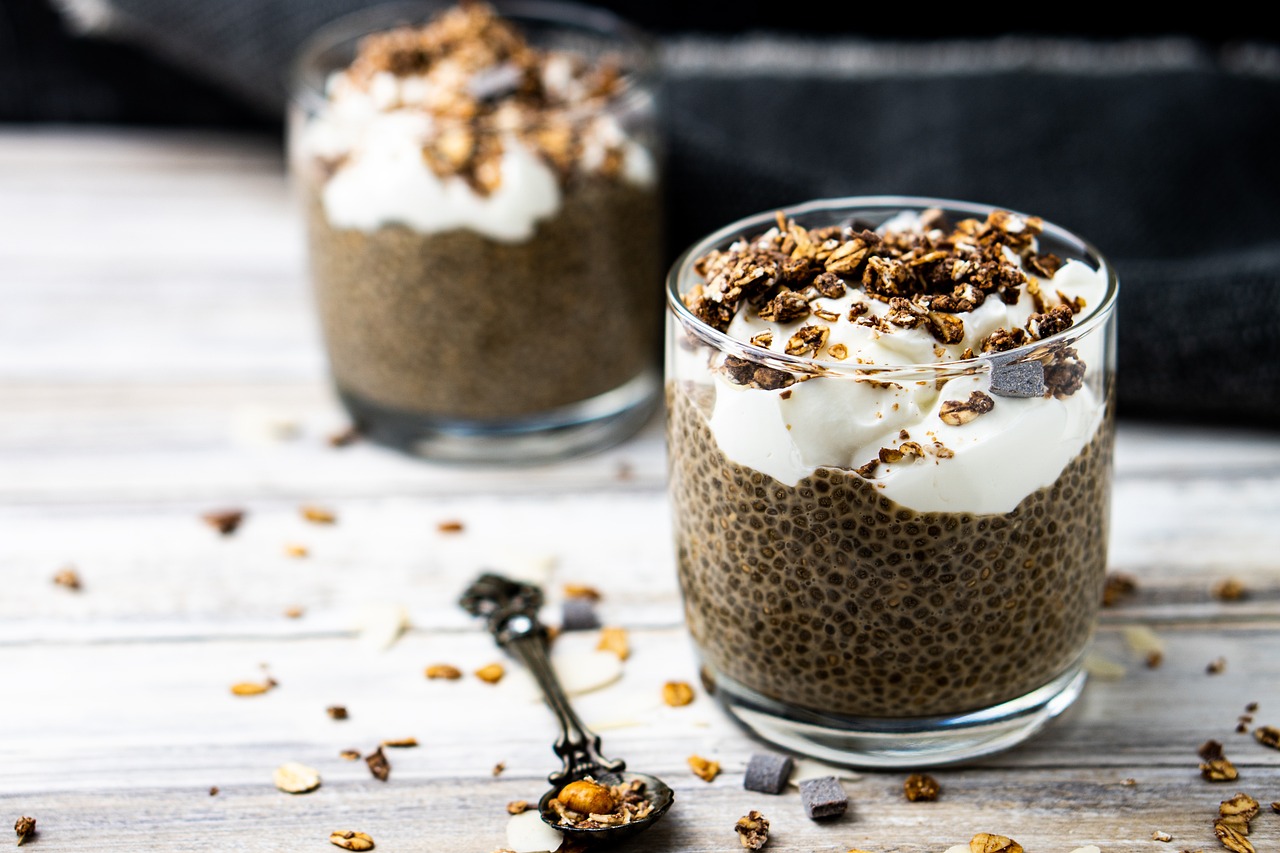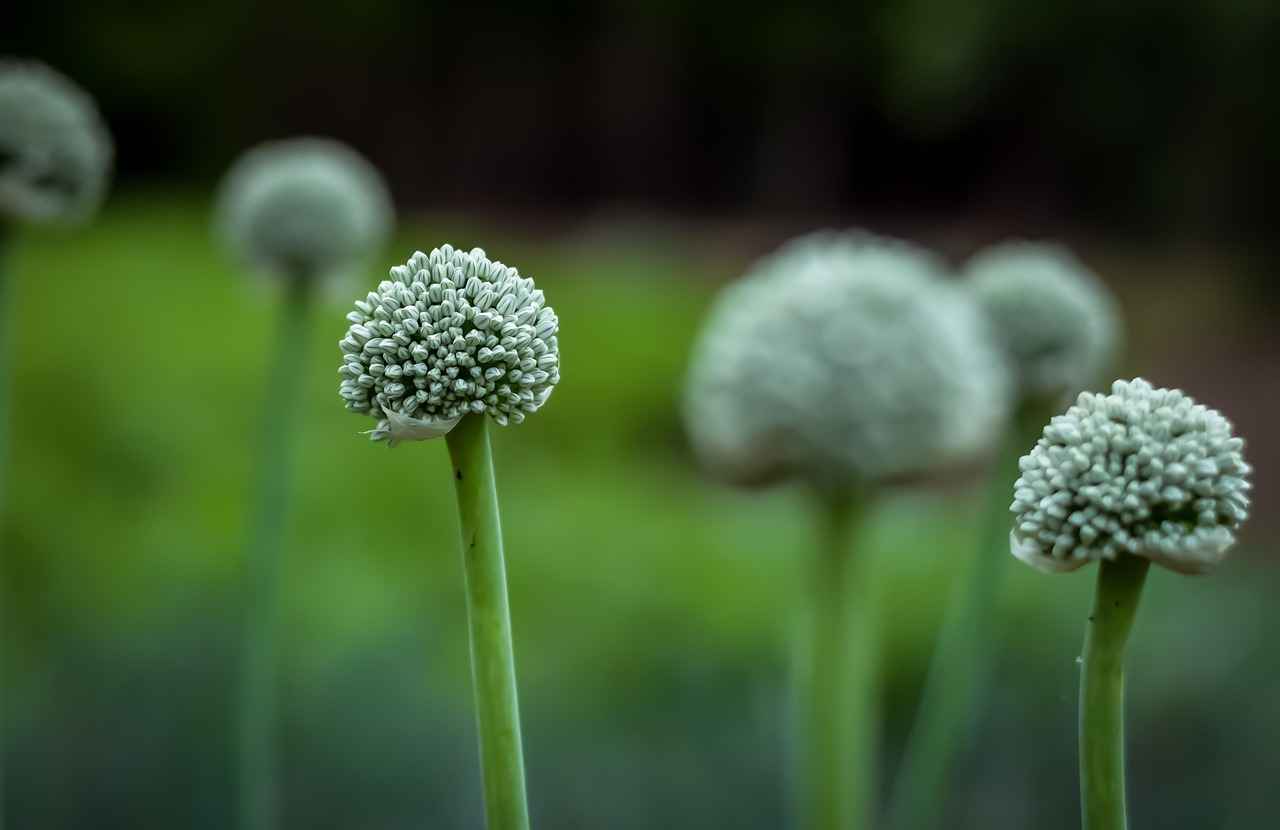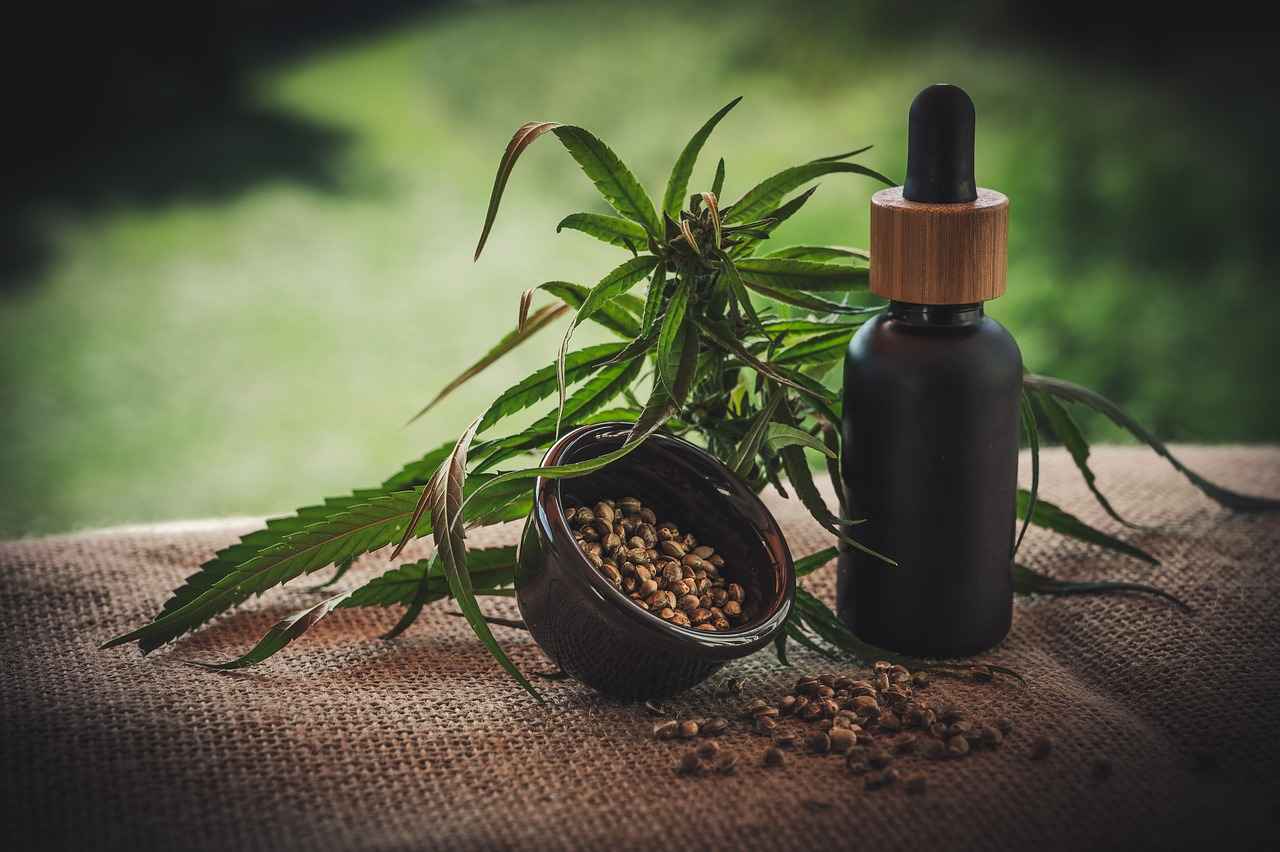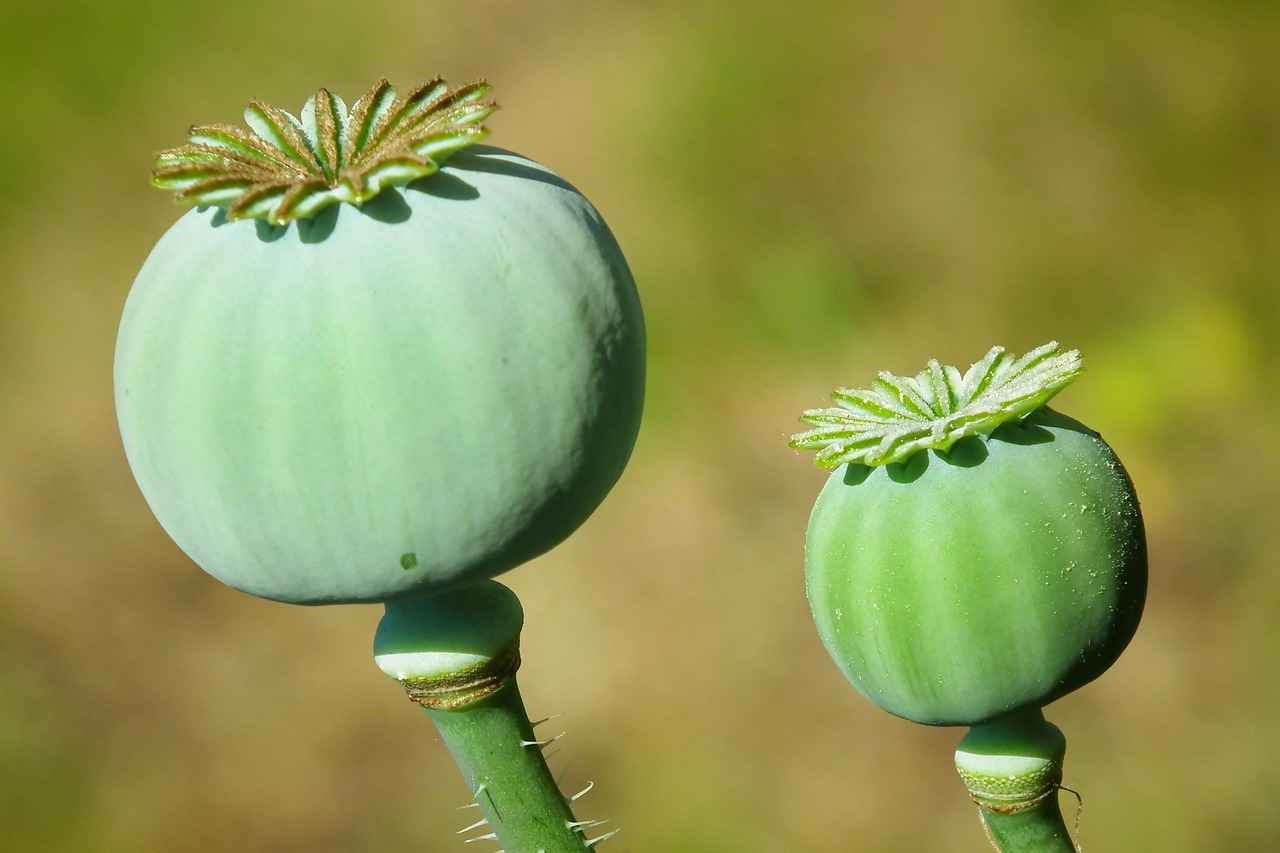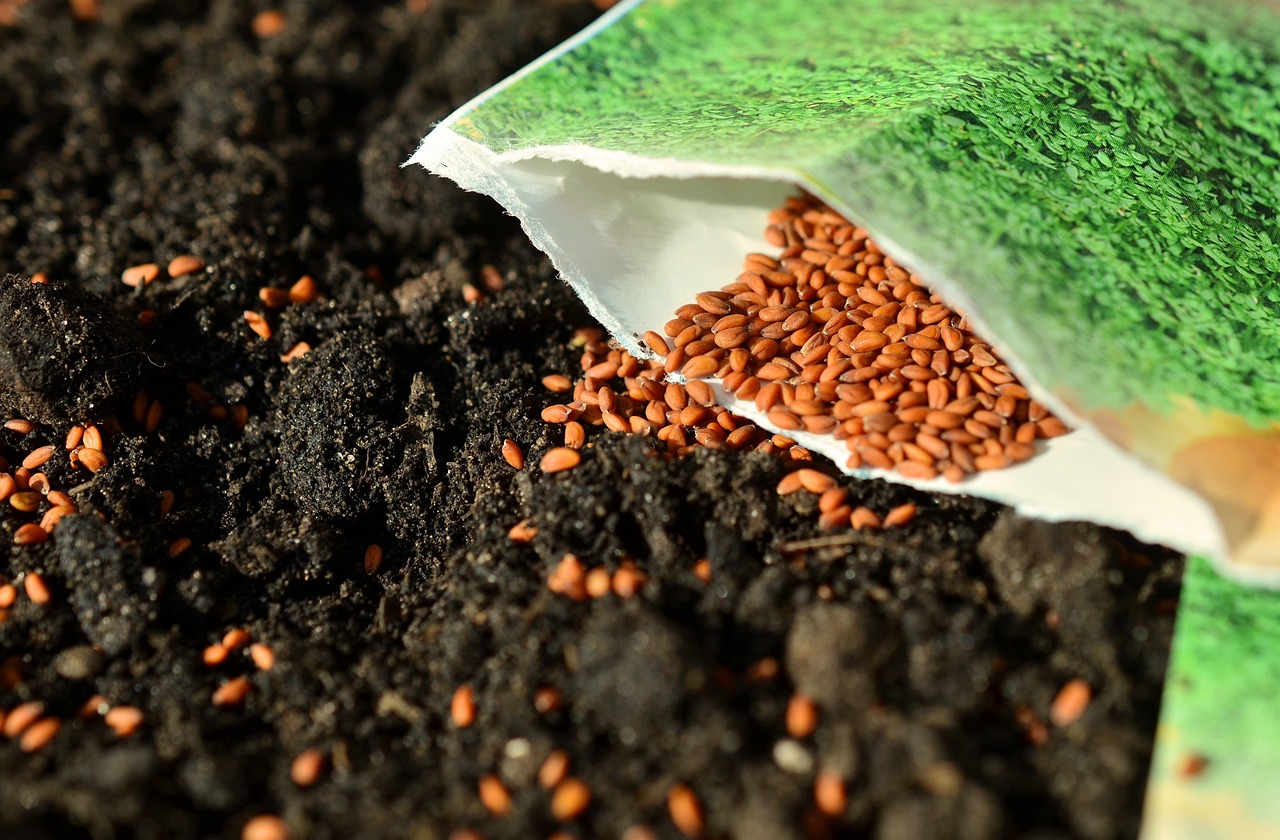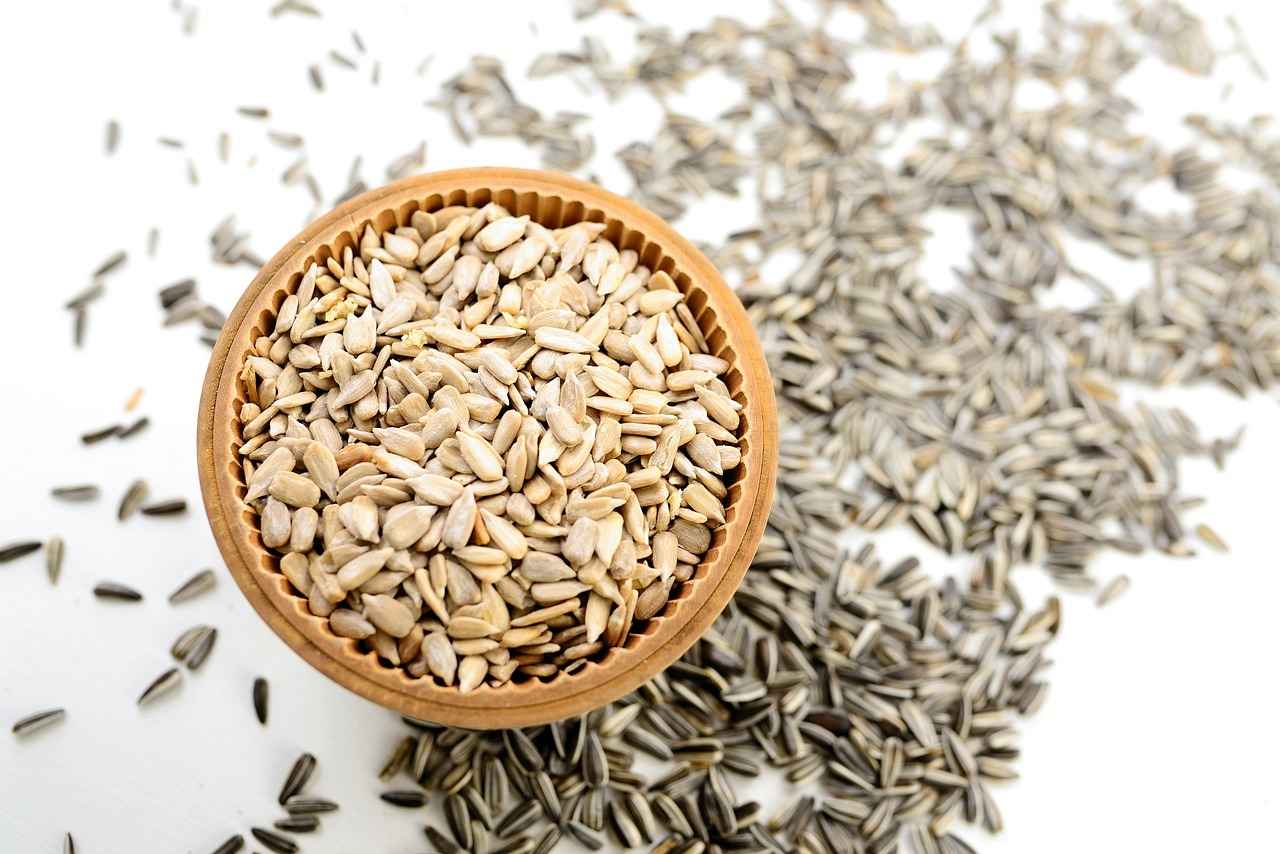Chia seeds have gained immense popularity in recent years, not only for their unique texture but also for their impressive health benefits. These tiny seeds, derived from the Salvia hispanica plant, are packed with essential nutrients that can significantly enhance your overall wellness. In this article, we will explore the numerous health benefits of chia seeds and effective ways to incorporate them into your daily diet for optimal nutrition.
Chia seeds are small black or white seeds that are rich in omega-3 fatty acids, fiber, protein, and various essential minerals. They are considered a superfood due to their high nutritional value and versatility in cooking.
These tiny seeds offer a wide array of health benefits:
- Improved Digestion: The high fiber content in chia seeds aids in digestion, promoting regular bowel movements.
- Heart Health: Chia seeds can help lower cholesterol levels and reduce blood pressure, contributing to better cardiovascular health.
- Weight Management: Due to their ability to absorb water and swell, chia seeds can promote a feeling of fullness, helping with weight control.
There are countless ways to enjoy chia seeds:
- Chia Seed Pudding: Combine chia seeds with milk or a milk alternative and let them soak overnight for a delicious breakfast or snack.
- Smoothies: Add a tablespoon of chia seeds to your smoothies for an extra nutritional boost.
- Baking: Incorporate chia seeds into your favorite baked goods, such as muffins or bread, for added texture and nutrition.
Proper preparation can enhance the benefits of chia seeds:
- Soaking: Soaking chia seeds in water or milk before consumption allows them to expand and form a gel-like consistency, making them easier to digest.
- Grinding: Ground chia seeds can be added to oatmeal or yogurt, facilitating better nutrient absorption.
While chia seeds are generally safe, some individuals may experience:
- Digestive Issues: Consuming large amounts of chia seeds without adequate hydration can lead to bloating or discomfort.
- Medication Interactions: Chia seeds may interact with certain medications, particularly blood thinners, due to their omega-3 content.
The recommended daily intake of chia seeds is about 1-2 tablespoons. Monitoring your body’s response is essential to ensure you enjoy the health benefits without any adverse effects.
Here are some innovative ideas for using chia seeds:
- Energy Bars: Create homemade energy bars using chia seeds for a nutritious on-the-go snack.
- In Salad Dressings: Use chia seeds in salad dressings for added thickness and nutrition.
For the best quality chia seeds, consider the following options:
- Health Food Stores: These stores typically offer organic chia seeds without additives.
- Online Retailers: Many reputable online platforms provide a variety of chia seeds at competitive prices.
In conclusion, incorporating chia seeds into your diet can provide numerous health benefits. By understanding how to prepare and consume them effectively, you can enjoy their nutritional advantages while enhancing your overall wellness.
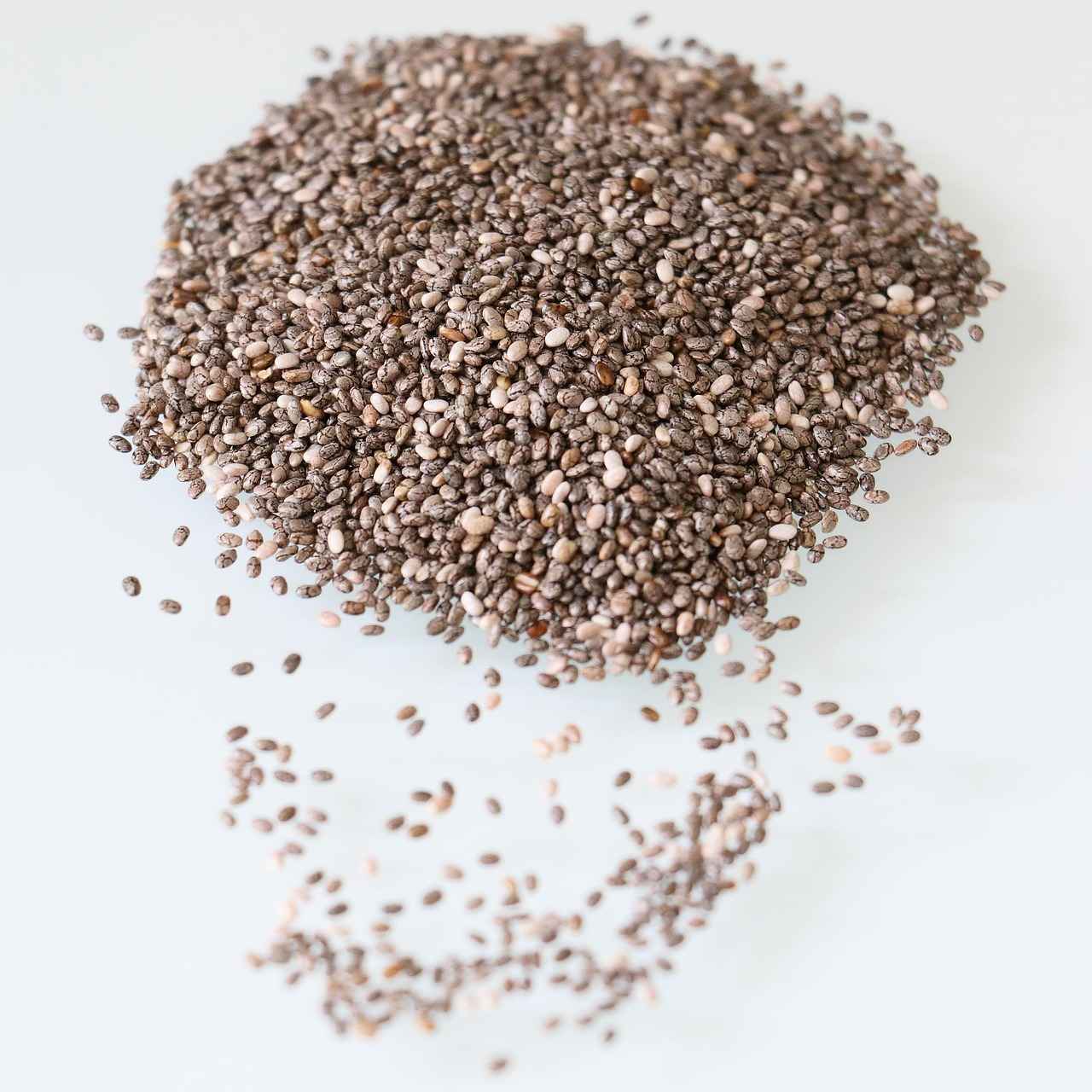
What Are Chia Seeds?
Chia seeds, derived from the Salvia hispanica plant, are tiny yet powerful seeds that have gained immense popularity as a superfood. These seeds are not only rich in essential nutrients but also versatile in their culinary applications. In this article, we will explore the characteristics, benefits, and various ways to incorporate chia seeds into your diet.
Chia seeds are small, oval-shaped seeds that come in various colors, including white, black, and brown. They are renowned for their nutrient density, making them a staple in health-conscious diets. Chia seeds are particularly valued for their high content of omega-3 fatty acids, dietary fiber, and protein, which contribute to their classification as a superfood.
Chia seeds offer a multitude of health benefits, making them a popular choice among nutrition enthusiasts. Here are some reasons why they stand out:
- Rich in Nutrients: Chia seeds are packed with nutrients such as antioxidants, calcium, magnesium, and iron, which are vital for maintaining overall health.
- High in Omega-3 Fatty Acids: These seeds contain alpha-linolenic acid (ALA), a type of omega-3 that supports heart health and reduces inflammation.
- Excellent Source of Fiber: With a significant amount of dietary fiber, chia seeds promote digestive health, aid in weight management, and help regulate blood sugar levels.
The health benefits of chia seeds are extensive:
- Improved Digestion: The high fiber content aids in digestion and helps maintain a healthy gut.
- Heart Health: Regular consumption may lower cholesterol and blood pressure, promoting cardiovascular wellness.
- Weight Management: Chia seeds can enhance feelings of fullness, making it easier to manage weight.
Incorporating chia seeds into your meals is simple and versatile:
- Chia Seed Pudding: Mix chia seeds with your choice of milk or yogurt and let them soak overnight for a nutritious breakfast.
- In Smoothies: Add a tablespoon of chia seeds to your smoothies for an extra nutrient boost without altering the flavor.
- In Baking: Use chia seeds in muffins, breads, or energy bars to enhance their nutritional profile.
To maximize the health benefits of chia seeds, proper preparation is essential:
- Soaking: Soak chia seeds in water or milk for at least 30 minutes to allow them to expand and form a gel-like consistency, making them easier to digest.
- Grinding: Grinding chia seeds can improve nutrient absorption, making them a great addition to various recipes.
While chia seeds are generally safe, some individuals may experience digestive discomfort if consumed in excess. It’s important to stay hydrated when increasing fiber intake. Additionally, those on blood-thinning medications should consult a healthcare professional before adding chia seeds to their diet.
The recommended serving size is typically 1-2 tablespoons per day. It’s essential to listen to your body and adjust your intake based on how you feel.
Chia seeds can be used in numerous innovative ways:
- Energy Bars: Create homemade energy bars that include chia seeds for a nutritious snack.
- Baking: Add chia seeds to your favorite baked goods for a delightful crunch and added nutrition.
In conclusion, chia seeds are a versatile and nutritious addition to any diet, offering a wide range of health benefits. By incorporating them into your meals, you can enhance your overall well-being and enjoy their unique properties.
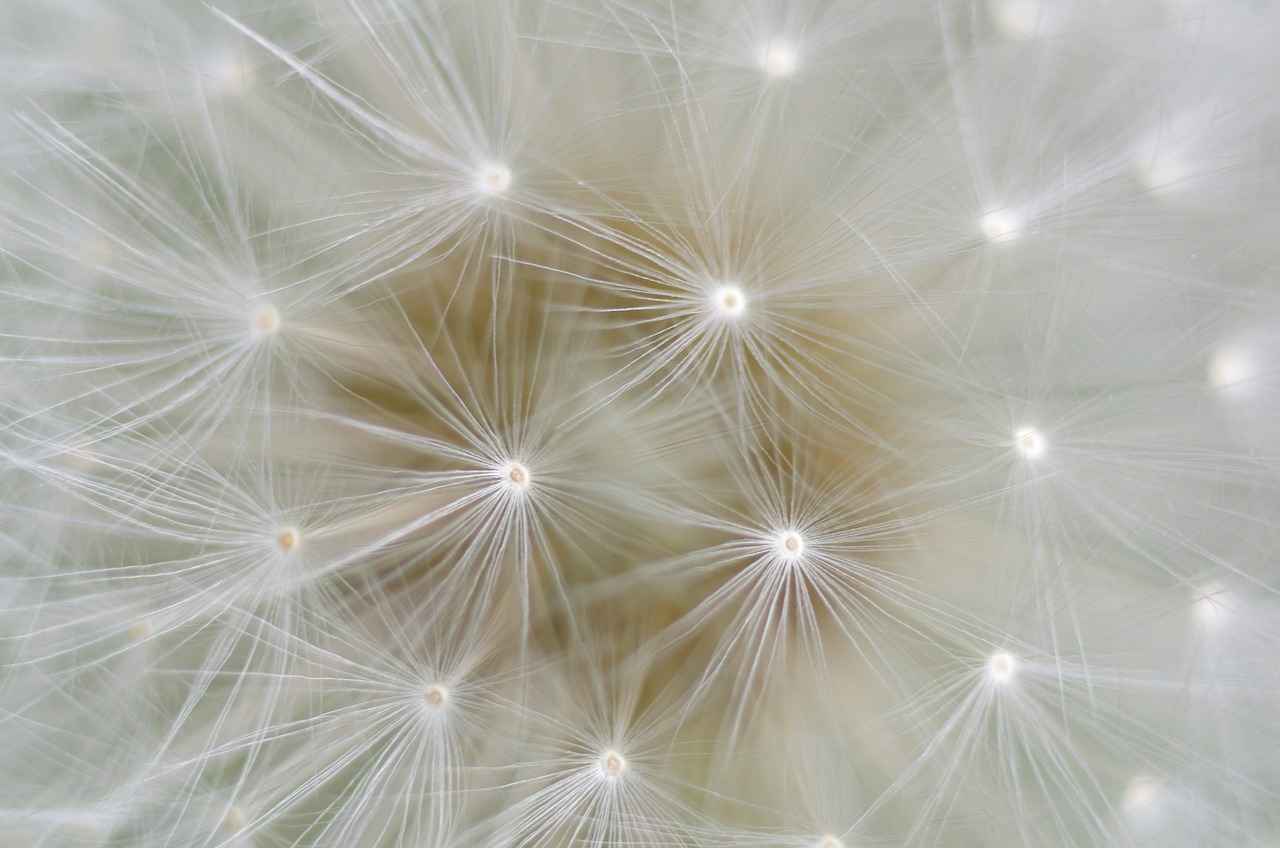
Why Are Chia Seeds Beneficial for Your Health?
Chia seeds are often hailed as a superfood, and for good reason. These tiny seeds are packed with an impressive array of nutrients and offer numerous health benefits. From enhancing digestion to supporting heart health and aiding in weight management, chia seeds can play a pivotal role in improving overall well-being.
Improved Digestion
One of the standout benefits of chia seeds is their high fiber content. Just two tablespoons of chia seeds provide approximately 11 grams of fiber, which is essential for maintaining a healthy digestive system. Fiber helps to regulate bowel movements, preventing constipation and promoting a healthy gut microbiome. Additionally, the soluble fiber in chia seeds absorbs water, forming a gel-like substance that can help you feel fuller for longer, thereby reducing overall calorie intake.
Heart Health Support
Chia seeds are rich in omega-3 fatty acids, particularly alpha-linolenic acid (ALA), which is known for its heart-protective properties. Regular consumption of omega-3s can help lower cholesterol levels, reduce blood pressure, and decrease inflammation throughout the body. Studies suggest that incorporating chia seeds into your diet may lead to improved cardiovascular health, making them an excellent addition to a heart-healthy lifestyle.
Weight Management Aid
For those looking to manage their weight, chia seeds can be a valuable ally. Their high fiber content not only promotes satiety but also helps stabilize blood sugar levels. This can prevent the spikes and crashes that often lead to unhealthy snacking. By incorporating chia seeds into meals, individuals may find it easier to control their appetite and make healthier food choices.
Rich Nutrient Profile
Chia seeds are a powerhouse of essential nutrients. They are an excellent source of antioxidants, calcium, magnesium, and iron, all of which contribute to various bodily functions. Antioxidants help combat oxidative stress, while minerals like calcium and magnesium are crucial for maintaining strong bones and supporting muscle function. By adding chia seeds to your diet, you can easily boost your nutrient intake.
Enhanced Energy Levels
The combination of protein, fiber, and healthy fats in chia seeds provides a steady source of energy. Unlike refined carbohydrates that can lead to energy crashes, chia seeds release energy slowly, helping you stay energized throughout the day. This makes them an ideal addition to breakfast or as a pre-workout snack.
How to Incorporate Chia Seeds into Your Diet
- Chia Seed Pudding: Combine chia seeds with milk or a dairy-free alternative, let them soak overnight, and add your favorite toppings for a nutritious breakfast.
- Smoothies: Blend chia seeds into your smoothies for an extra boost of fiber and healthy fats without altering the flavor.
- Baking: Incorporate chia seeds into muffins, breads, or energy bars for added nutrition.
In summary, chia seeds are a versatile superfood that can significantly enhance your health. Their impressive nutrient profile supports digestion, heart health, and weight management, making them a valuable addition to any diet. Whether you choose to sprinkle them on top of your meals or blend them into smoothies, the benefits of chia seeds are undeniable.
High in Nutrients
Chia seeds have gained significant popularity as a superfood due to their impressive nutrient profile. These tiny seeds, derived from the Salvia hispanica plant, are not only versatile but also packed with essential nutrients that contribute to overall health and wellness. In this section, we will explore the various nutrients found in chia seeds and their benefits for the body.
Chia seeds are a powerhouse of nutrients, making them a valuable addition to any diet. Here are some of the key components:
- Antioxidants: Chia seeds are rich in antioxidants, which help combat oxidative stress and reduce inflammation in the body.
- Calcium: With a high calcium content, chia seeds support bone health and contribute to the prevention of osteoporosis.
- Magnesium: This mineral plays a crucial role in over 300 biochemical reactions in the body, including muscle and nerve function, blood sugar control, and blood pressure regulation.
- Iron: Chia seeds are an excellent source of iron, essential for the production of hemoglobin and maintaining healthy energy levels.
- Omega-3 Fatty Acids: These essential fats are vital for heart health, reducing inflammation, and supporting brain function.
- Fiber: Chia seeds contain a significant amount of dietary fiber, which aids in digestion and promotes a feeling of fullness.
The combination of these nutrients offers numerous health benefits:
- Heart Health: The omega-3 fatty acids and antioxidants in chia seeds can help lower cholesterol levels and reduce the risk of heart disease.
- Bone Strength: The calcium and magnesium content supports bone density and strength, making chia seeds an excellent choice for those looking to maintain strong bones.
- Energy Levels: Iron is crucial for transporting oxygen in the blood, which can enhance energy levels and combat fatigue.
- Digestive Health: The high fiber content helps regulate bowel movements, improve gut health, and prevent constipation.
To fully benefit from the nutrients in chia seeds, consider the following tips:
- Soaking: Soaking chia seeds in water or milk before consumption can enhance their digestibility and nutrient absorption.
- Grinding: Grinding chia seeds can make the nutrients more accessible, allowing for better absorption in the body.
- Pairing with Other Foods: Combine chia seeds with foods rich in vitamin C, such as citrus fruits, to enhance iron absorption.
Incorporating chia seeds into your daily diet can lead to significant health improvements. Their unique combination of nutrients not only supports various bodily functions but also contributes to overall wellness. Whether added to smoothies, baked goods, or enjoyed as a pudding, chia seeds are a simple and effective way to boost your nutrient intake.
Rich in Omega-3 Fatty Acids
are essential for maintaining optimal health, and chia seeds are one of the best plant-based sources available. These tiny seeds are packed with alpha-linolenic acid (ALA), a type of omega-3 fatty acid that plays a crucial role in supporting heart health and reducing inflammation throughout the body.
Omega-3 fatty acids are known for their numerous health benefits, which include:
- Heart Health: ALA helps in lowering cholesterol levels and reducing blood pressure, contributing to a healthier cardiovascular system.
- Anti-Inflammatory Properties: Regular consumption of omega-3s can help reduce inflammation, which is linked to various chronic diseases.
- Brain Function: Omega-3 fatty acids are vital for brain health, potentially improving cognitive function and reducing the risk of neurodegenerative diseases.
Research indicates that diets rich in omega-3 fatty acids can lead to improved heart health. A study published in the American Journal of Clinical Nutrition highlighted that individuals consuming higher amounts of ALA had a lower risk of heart disease. This is particularly important in today’s fast-paced world, where heart-related issues are increasingly prevalent.
In addition to heart health, chia seeds’ omega-3 content is beneficial for those with inflammatory conditions. The anti-inflammatory effects of ALA can help alleviate symptoms of arthritis and other inflammatory diseases, enhancing overall quality of life.
Incorporating chia seeds into your diet is simple and versatile. Here are some effective ways to enjoy their omega-3 benefits:
- Chia Seed Pudding: Mix chia seeds with your choice of milk or yogurt and let them soak overnight. This creates a delicious, nutrient-rich pudding.
- Smoothies: Add a tablespoon of chia seeds to your morning smoothie for an extra boost of omega-3s.
- Baking: Incorporate ground chia seeds into muffins, bread, or pancakes for added nutrition without altering the flavor.
It’s important to note that while chia seeds are a fantastic source of ALA, the body must convert ALA into other forms of omega-3s, such as EPA and DHA, which are primarily found in fish. Therefore, for those who do not consume fish, it’s beneficial to include a variety of omega-3 sources in your diet to ensure adequate intake.
In conclusion, chia seeds are a powerful addition to any diet, particularly for those looking to enhance their omega-3 fatty acid intake. By including these seeds in your meals, you can support heart health, reduce inflammation, and promote overall well-being. Don’t miss out on the incredible health benefits that these tiny seeds can offer!
High Fiber Content
Chia seeds are renowned for their impressive fiber content, which plays a crucial role in promoting digestive health and overall well-being. With approximately 10 grams of fiber per ounce, these tiny seeds are an excellent addition to any diet, especially for those looking to enhance their nutritional intake.
How Does Fiber Benefit Digestion?
The fiber found in chia seeds is primarily soluble fiber, which absorbs water and forms a gel-like substance in the stomach. This process not only aids in digestion but also helps maintain regular bowel movements. By adding bulk to the stool, fiber facilitates smoother passage through the digestive tract, reducing the risk of constipation.
Promoting Satiety and Weight Management
One of the standout benefits of chia seeds is their ability to promote a feeling of fullness. When consumed, the soluble fiber expands in the stomach, leading to increased satiety. This can help control appetite and reduce the likelihood of overeating, making chia seeds a valuable ally for those aiming to manage their weight effectively. Incorporating chia seeds into meals can help you feel satisfied longer, which may lead to healthier eating patterns overall.
Regulating Blood Sugar Levels
Chia seeds also play a significant role in regulating blood sugar levels. The fiber content slows down the absorption of sugar in the bloodstream, preventing spikes that can lead to energy crashes and cravings. This characteristic is particularly beneficial for individuals with diabetes or those looking to maintain stable energy levels throughout the day.
How to Incorporate Chia Seeds into Your Diet?
- Chia Seed Pudding: Combine chia seeds with your choice of milk or yogurt, let it sit overnight, and enjoy a nutritious breakfast.
- Smoothies: Add a tablespoon of chia seeds to your favorite smoothie for an extra fiber boost without altering the flavor.
- Baking: Incorporate chia seeds into muffins, bread, or energy bars for added texture and health benefits.
Potential Digestive Concerns
While chia seeds are generally safe for most people, it’s important to consume them with adequate hydration. The high fiber content can lead to digestive discomfort if consumed in excess without sufficient fluids. To avoid any issues, gradually increase your intake and ensure you drink plenty of water.
Conclusion
In summary, the high fiber content in chia seeds offers a multitude of health benefits, including improved digestion, increased satiety, and better blood sugar regulation. By incorporating chia seeds into your diet, you can take advantage of these benefits while enjoying a versatile and nutrient-dense superfood.
Support for Heart Health
Chia seeds, often referred to as a superfood, have gained significant attention for their potential benefits to heart health. Regularly incorporating these tiny seeds into your diet can lead to profound improvements in cardiovascular wellness. This section delves into how chia seeds contribute to better heart health and why they should be a staple in your diet.
One of the most significant benefits of chia seeds is their ability to help lower cholesterol levels. They are rich in soluble fiber, which can bind to cholesterol in the digestive system and promote its excretion. This process can lead to lower levels of LDL (bad cholesterol) in the bloodstream, reducing the risk of heart disease.
High blood pressure is a major risk factor for heart disease and stroke. Chia seeds contain omega-3 fatty acids, which have been shown to help lower blood pressure. These healthy fats can improve blood vessel function, leading to better circulation and reduced strain on the heart. Regular consumption of chia seeds may contribute to maintaining a healthy blood pressure level.
Chronic inflammation is linked to numerous health issues, including heart disease. Chia seeds are loaded with antioxidants, which can help combat oxidative stress and reduce inflammation in the body. By including chia seeds in your diet, you may enhance your body’s ability to fight inflammation, thereby supporting overall heart health.
In addition to lowering cholesterol and blood pressure, chia seeds offer a range of nutrients that promote heart health. They are an excellent source of fiber, which aids in digestion and helps maintain a healthy weight. Weight management is crucial for heart health, as excess weight can lead to increased blood pressure and cholesterol levels.
Incorporating chia seeds into a balanced diet can enhance heart health significantly. They can be easily added to various meals, such as smoothies, salads, and baked goods. By doing so, you not only improve the nutritional profile of your meals but also enjoy the heart-friendly benefits that chia seeds provide.
- Soak Them: Soaking chia seeds in water or milk before consumption can enhance their digestibility and nutrient absorption.
- Combine with Other Heart-Healthy Foods: Pair chia seeds with fruits, nuts, and whole grains for a balanced meal.
- Monitor Your Intake: Aim for 1-2 tablespoons daily to gain the most health benefits without overwhelming your digestive system.
In conclusion, the regular consumption of chia seeds can play a vital role in supporting heart health. Their ability to lower cholesterol levels, reduce blood pressure, and provide anti-inflammatory benefits makes them an essential addition to a heart-healthy diet. Embrace the power of chia seeds and take a proactive step towards better cardiovascular health.
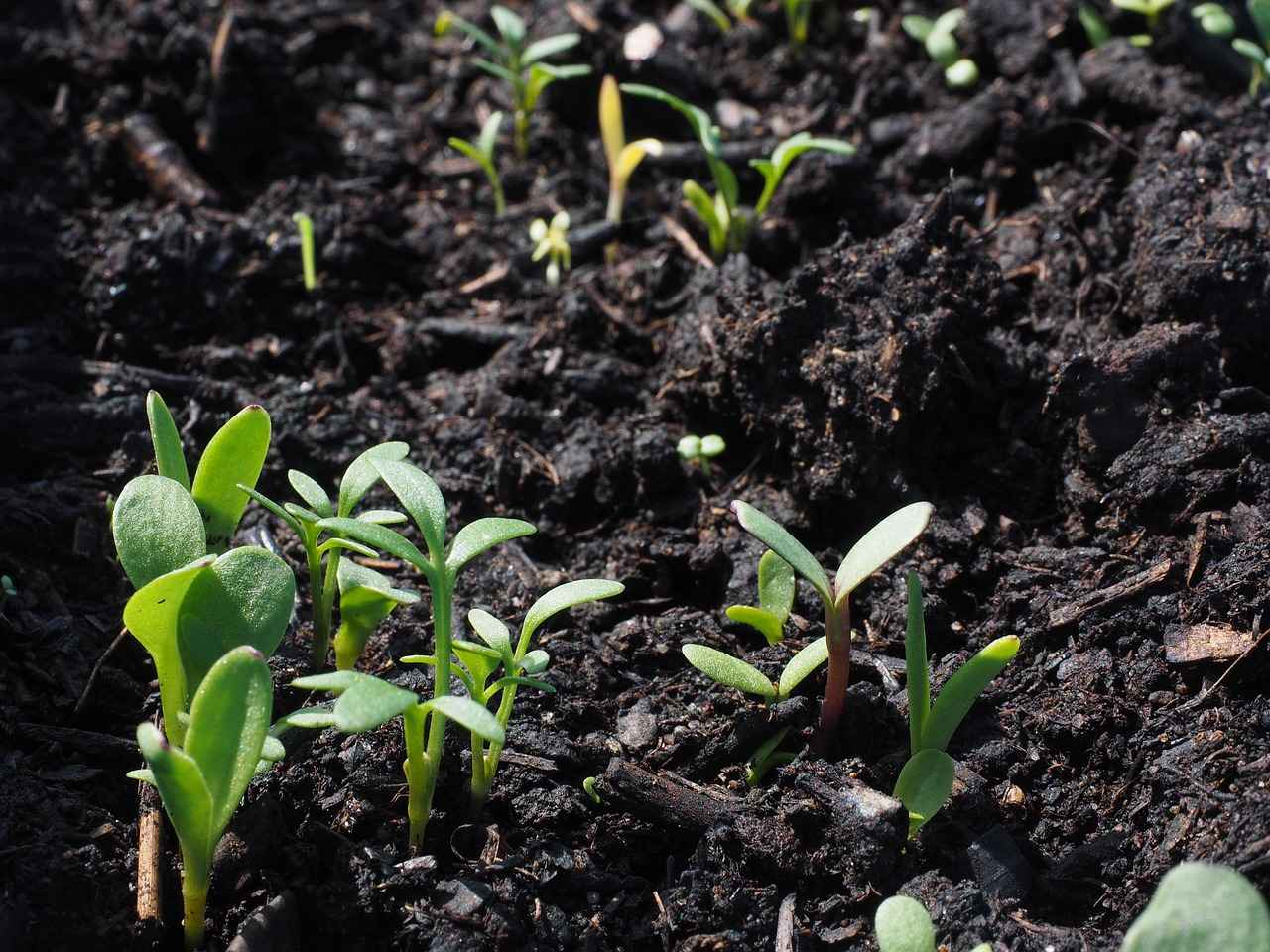
How to Incorporate Chia Seeds into Your Diet?
Chia seeds have gained immense popularity in recent years, thanks to their remarkable health benefits and versatility in the kitchen. These tiny seeds are packed with nutrients and can easily be incorporated into a variety of dishes. Whether you enjoy them in smoothies, baked goods, or as a topping for various meals, there are countless ways to enjoy chia seeds and enhance your diet.
One of the simplest ways to include chia seeds in your diet is by adding them to smoothies. Not only do they boost the nutritional profile, but they also help create a creamy texture. To prepare a chia seed smoothie, blend your favorite fruits, vegetables, and a liquid of your choice, then stir in a tablespoon of chia seeds. Allow the mixture to sit for a few minutes to let the seeds absorb some liquid and expand, enhancing the smoothie’s thickness.
Chia seed pudding is another fantastic way to enjoy these super seeds. It’s not only easy to make, but it can also be customized to suit your taste preferences. To prepare, mix chia seeds with milk (dairy or plant-based) and sweeten with honey or maple syrup. Let the mixture sit in the refrigerator for at least 2 hours or overnight to achieve a pudding-like consistency. You can top it with fruits, nuts, or granola for added flavor and texture.
Incorporating chia seeds into your baked goods can add a nutritional boost. Consider adding chia seeds to muffins, breads, or pancakes. They can replace eggs in vegan recipes by mixing 1 tablespoon of chia seeds with 2.5 tablespoons of water and letting it sit until it forms a gel-like consistency. This mixture can be used as a binding agent, enhancing the fiber content of your baked treats.
Chia seeds make an excellent topping for various dishes. Sprinkle them on yogurt, oatmeal, or salads to add a delightful crunch and a dose of nutrients. They can also be used to enhance the flavor and texture of smoothie bowls, providing an appealing visual and nutritional boost.
Homemade energy bars are a convenient way to incorporate chia seeds into your diet. Mix oats, nut butter, honey, and chia seeds to create a nutritious snack that can keep you energized throughout the day. Press the mixture into a pan, refrigerate until firm, and then cut them into bars for an easy grab-and-go option.
For those looking to add chia seeds to savory dishes, consider adding them to soups and stews. They can thicken the consistency while providing additional nutrients. Simply stir in a tablespoon or two during the last few minutes of cooking, allowing them to absorb the flavors of the dish.
Chia seeds can also be used to create a healthy jam alternative. By combining mashed fruit with chia seeds and a sweetener, you can create a delicious spread that pairs perfectly with toast or yogurt. Let the mixture sit for a few hours to allow the chia seeds to absorb the liquid and thicken the mixture.
In conclusion, incorporating chia seeds into your diet is both simple and beneficial. With their versatility, you can enjoy them in a variety of meals, enhancing both flavor and nutrition. From smoothies and puddings to baked goods and energy bars, the possibilities are endless. Start experimenting with chia seeds today and discover how they can elevate your meals!
Chia Seed Pudding Recipes
Chia seed pudding is not only a popular dish but also a nutritious and versatile option that can be tailored to suit your taste preferences. With its unique texture and ability to absorb flavors, chia seed pudding can be a delightful addition to your breakfast or snack routine.
Chia seed pudding is an excellent choice for those seeking a healthy meal that is easy to prepare. It is packed with nutrients, including omega-3 fatty acids, fiber, and protein, making it a well-rounded dish. Additionally, it can be made ahead of time, allowing for convenient meal prep.
To create a simple chia seed pudding, follow these steps:
- Ingredients:
- 1/4 cup chia seeds
- 1 cup milk (dairy or plant-based)
- 1-2 tablespoons sweetener (honey, maple syrup, or agave)
- 1/2 teaspoon vanilla extract
- Instructions:
- In a bowl, combine the chia seeds, milk, sweetener, and vanilla extract.
- Stir well to prevent clumping.
- Cover and refrigerate for at least 2 hours or overnight.
- Once thickened, stir again and serve with your favorite toppings.
Chia seed pudding can be customized in countless ways. Here are some delicious variations to try:
- Chocolate Chia Seed Pudding: Add 2 tablespoons of cocoa powder and a bit more sweetener for a rich chocolate flavor.
- Berry Bliss: Mix in your favorite berries, such as strawberries or blueberries, for a fruity twist.
- Mango Coconut: Use coconut milk and add fresh mango puree for a tropical flair.
- Matcha Green Tea: Stir in 1 teaspoon of matcha powder for a nutritious boost and unique flavor.
Top your chia seed pudding with a variety of healthy toppings to add texture and flavor:
- Fresh Fruits: Sliced bananas, berries, or kiwi can add natural sweetness.
- Nuts and Seeds: Almonds, walnuts, or pumpkin seeds provide a satisfying crunch.
- Granola: A sprinkle of granola can enhance the texture and add extra fiber.
- Nut Butters: A dollop of almond or peanut butter can add creaminess and protein.
Incorporating chia seed pudding into your diet offers numerous health benefits:
- High in Fiber: Chia seeds are incredibly high in fiber, promoting digestive health and helping you feel full longer.
- Rich in Antioxidants: They contain antioxidants that help combat oxidative stress and inflammation.
- Supports Heart Health: The omega-3 fatty acids in chia seeds contribute to cardiovascular health.
In conclusion, chia seed pudding is a delicious and nutritious option that can be easily customized to fit your dietary needs. With endless flavor possibilities and health benefits, it’s no wonder this dish has become a staple for many health-conscious individuals.
Adding Chia Seeds to Smoothies
is an excellent way to enhance their nutritional profile without compromising on taste. These tiny seeds pack a powerful punch, offering a variety of health benefits that can elevate your smoothie game. Let’s explore how incorporating chia seeds can transform your smoothies into nutrient-rich powerhouses.
Chia seeds are incredibly versatile and can be seamlessly integrated into your smoothies. They are rich in fiber, omega-3 fatty acids, and protein, making them a perfect addition for anyone looking to boost their nutritional intake. Here are some compelling reasons to consider:
- Enhanced Nutritional Value: Just one ounce of chia seeds contains about 11 grams of fiber, which aids in digestion and promotes a feeling of fullness.
- Healthy Fats: The omega-3 fatty acids found in chia seeds support heart health and can help reduce inflammation in the body.
- Weight Management: The high fiber content helps regulate appetite, making it easier to manage weight effectively.
Incorporating chia seeds into your smoothies is simple and requires minimal preparation. Here are some effective methods:
- Whole Seeds: Add 1-2 tablespoons of whole chia seeds directly to your smoothie ingredients. They will absorb liquid and expand, creating a slightly thicker texture.
- Soaked Chia Seeds: Soak chia seeds in water or your favorite milk for about 15-30 minutes before blending. This will create a gel-like consistency that can enhance the smoothness of your smoothie.
- Ground Chia Seeds: For easier digestion and better nutrient absorption, grind chia seeds in a blender or food processor before adding them to your smoothie.
Chia seeds have a mild, nutty flavor that complements various smoothie ingredients. Here are some popular flavor combinations:
- Berry Blast: Blend together mixed berries, yogurt, a banana, and chia seeds for a refreshing antioxidant-rich smoothie.
- Green Goodness: Combine spinach, avocado, almond milk, and chia seeds for a nutrient-dense green smoothie.
- Tropical Delight: Mix pineapple, mango, coconut water, and chia seeds for a refreshing tropical treat.
To get the most out of your chia seed smoothies, consider the following tips:
- Hydration: Always drink plenty of water when consuming chia seeds, as they absorb liquid and can lead to digestive issues if not adequately hydrated.
- Experiment: Don’t hesitate to experiment with different fruits, vegetables, and liquids to find your perfect smoothie combination.
- Portion Control: Stick to 1-2 tablespoons of chia seeds per smoothie to enjoy their benefits without overwhelming your digestive system.
Incorporating chia seeds into your smoothies not only boosts their nutritional value but also adds a satisfying texture. With their numerous health benefits and versatility, chia seeds are a fantastic addition to any smoothie recipe. Start experimenting today to discover your favorite combinations and enjoy the health benefits they offer!
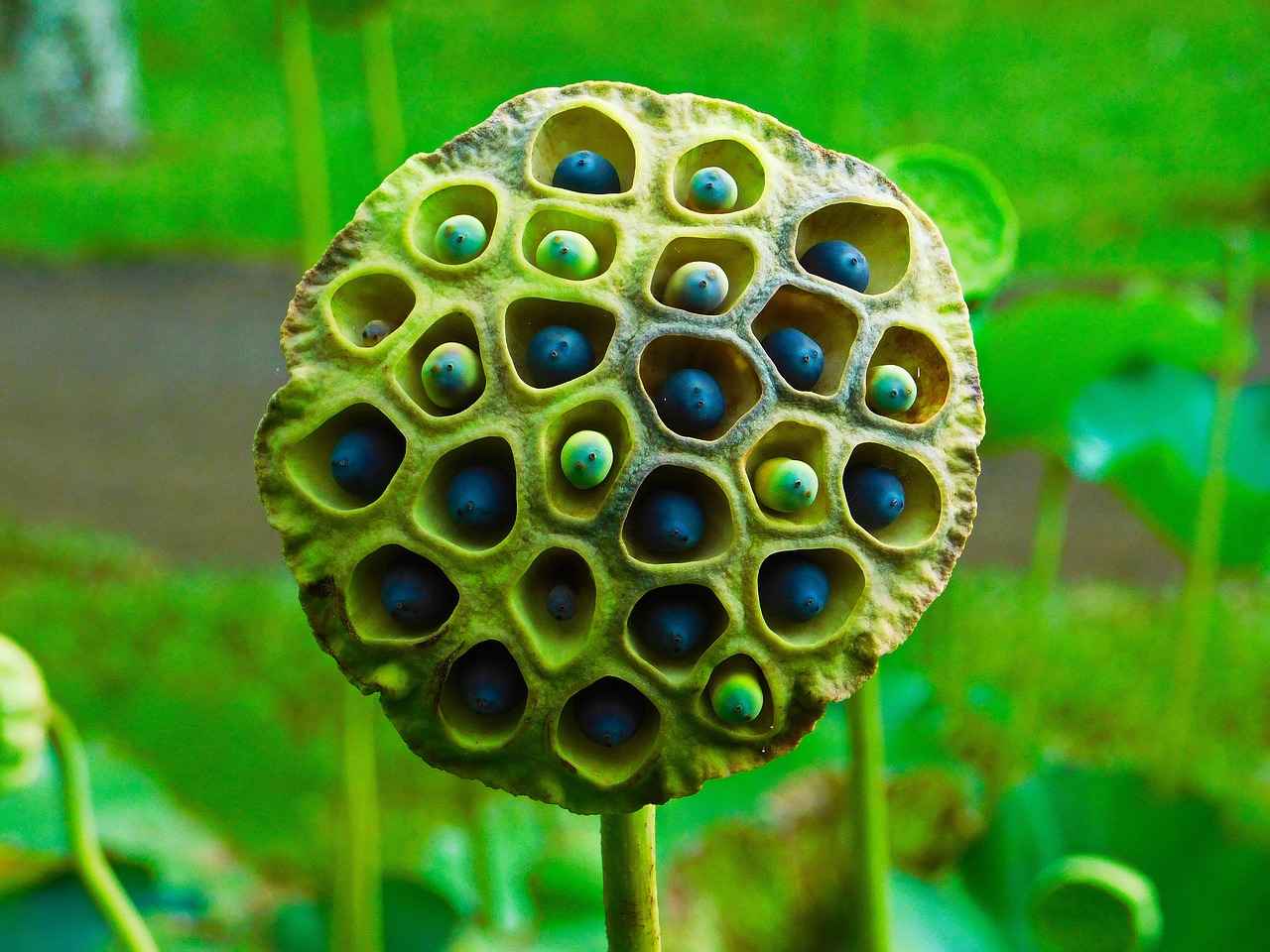
How to Prepare Chia Seeds for Consumption?
Chia seeds are often hailed as a superfood, packed with essential nutrients and health benefits. However, to truly unlock their potential, it is crucial to prepare them properly. Proper preparation of chia seeds enhances their digestibility and nutrient absorption, ensuring you get the most health benefits from this superfood.
Chia seeds contain a high amount of soluble fiber, which can absorb water and expand significantly. This property can lead to digestive discomfort if consumed dry or in large quantities without sufficient hydration. By preparing chia seeds correctly, you can avoid these issues and maximize their nutritional benefits.
One of the most effective ways to prepare chia seeds is by soaking them. Soaking chia seeds in water or milk allows them to absorb the liquid and swell, forming a gel-like consistency. This not only makes them easier to digest but also enhances their nutrient availability.
- To soak chia seeds, mix 1 tablespoon of seeds with 3 tablespoons of water or milk.
- Let the mixture sit for about 15-30 minutes until it thickens.
- Stir well before consuming, and you can add flavors like honey or vanilla for extra taste.
Another effective method for preparing chia seeds is to grind them. Grinding chia seeds increases their surface area, which can lead to better nutrient absorption in the body.
- Use a blender or coffee grinder to achieve a fine powder.
- Add ground chia seeds to smoothies, oatmeal, or baked goods for an added nutritional boost.
Chia seeds can be easily incorporated into various meals and snacks. Here are some popular ways to enjoy them:
- Chia Seed Pudding: Combine soaked chia seeds with your choice of milk and let it sit overnight. Add fruits and nuts for a delicious breakfast.
- Smoothies: Blend chia seeds into your favorite smoothie for added fiber and omega-3 fatty acids.
- Baking: Substitute ground chia seeds for a portion of flour in recipes for muffins or pancakes.
While chia seeds are generally safe, improper consumption can lead to digestive issues. It’s essential to stay hydrated when consuming chia seeds, especially if you are eating them dry or in large quantities.
Preparing chia seeds correctly can significantly enhance their health benefits. Whether you choose to soak them or grind them, these methods ensure that you can enjoy the full spectrum of nutrients that chia seeds offer. By incorporating chia seeds into your daily diet in a well-prepared manner, you can support your overall health and wellness.
Soaking Chia Seeds
is a simple yet effective method to enhance their nutritional benefits and improve their digestibility. When you soak chia seeds in water or milk, they absorb the liquid and expand, forming a gel-like consistency. This transformation not only makes the seeds easier to consume but also significantly boosts their health benefits.
Why is soaking important? The gel-like consistency that chia seeds develop during soaking is primarily due to their high soluble fiber content. This fiber forms a viscous gel when it comes into contact with liquid, which can aid in digestion and promote a feeling of fullness. As a result, soaked chia seeds can be a valuable addition to your meals, especially for those looking to manage their weight.
Moreover, soaking chia seeds enhances their nutrient absorption. Raw chia seeds can be tough on the digestive system for some individuals, leading to bloating or discomfort. By soaking them, you break down the outer shell, making it easier for your body to access the essential nutrients they contain, such as omega-3 fatty acids, antioxidants, and various vitamins and minerals.
Incorporating soaked chia seeds into your diet is straightforward. Here are some popular ways to enjoy them:
- Chia Seed Pudding: Combine soaked chia seeds with your choice of milk and sweetener, then let it sit in the refrigerator overnight. Add fruits, nuts, or spices for extra flavor.
- Smoothies: Blend soaked chia seeds into your smoothies for added thickness and nutrition without altering the flavor.
- Oatmeal: Stir soaked chia seeds into your morning oatmeal for a nutrient boost.
For those who prefer a quicker method, you can also mix chia seeds into liquids and let them sit for about 15-30 minutes until they absorb the liquid and swell. This quick soak method is perfect for adding chia seeds to yogurt or salads.
It’s also worth noting that soaking chia seeds can enhance their palatability. The gel-like texture can make them more enjoyable to eat, especially for those who are not fond of the crunchiness of dry seeds. This makes soaked chia seeds a versatile ingredient that can be added to various dishes, from breakfast options to desserts.
Finally, soaking chia seeds is an excellent way to experiment with flavors. You can infuse the soaking liquid with vanilla extract, cocoa powder, or even fruit juices to create unique flavor profiles that suit your taste preferences.
In conclusion, soaking chia seeds is a beneficial practice that enhances their nutritional value, improves digestibility, and makes them more enjoyable to eat. Whether you choose to add them to smoothies, puddings, or baked goods, incorporating soaked chia seeds into your diet can contribute significantly to your overall health and well-being.
Using Ground Chia Seeds
Chia seeds, known for their impressive nutritional profile, can be used in various forms to enhance your diet. One effective way to maximize their benefits is by grinding them. This process not only improves their digestibility but also significantly increases nutrient absorption, making them an ideal addition to numerous meals.
When chia seeds are ground, their tough outer shell is broken down, allowing your body to access the essential nutrients more efficiently. This is particularly beneficial for individuals who may have difficulty digesting whole seeds, as grinding eliminates the risk of them passing through the digestive system undigested.
Grinding chia seeds can provide numerous advantages:
- Enhanced Nutrient Absorption: Ground chia seeds release more of their omega-3 fatty acids, protein, and fiber, making these nutrients readily available for your body to absorb.
- Improved Texture: For those who dislike the texture of whole chia seeds, ground seeds can be seamlessly incorporated into various dishes without altering the overall mouthfeel.
- Versatile Usage: Ground chia seeds can be used in a wide range of recipes, from smoothies to baked goods, enriching your meals with additional nutrition.
There are many creative ways to use ground chia seeds in your daily meals:
- Baked Goods: Add ground chia seeds to muffins, pancakes, or bread recipes to boost their nutritional content without changing the flavor.
- Oatmeal and Cereals: Stirring ground chia seeds into your morning oatmeal or cereal can enhance fiber and protein levels, helping you feel full longer.
- Yogurt and Smoothies: Mix ground chia seeds into yogurt or smoothies for added thickness and nutritional benefits, creating a satisfying and nutritious snack.
- Soups and Sauces: Ground chia seeds can also act as a thickening agent in soups and sauces, providing a nutritious boost while improving texture.
To get the most out of your ground chia seeds, consider the following tips:
- Use a Coffee Grinder: A coffee grinder is an excellent tool for grinding chia seeds quickly and effectively. Ensure to grind in small batches for the best results.
- Store Properly: Ground chia seeds should be stored in an airtight container in the refrigerator to maintain freshness and prevent oxidation.
- Start Slowly: If you are new to consuming ground chia seeds, start with small amounts to allow your digestive system to adjust.
Incorporating ground chia seeds into your diet is a simple yet effective way to enhance your nutritional intake. By breaking down the seeds, you can unlock their full potential, making them a valuable addition to a variety of meals. Whether you prefer them in baked goods, smoothies, or as a topping for yogurt, ground chia seeds offer a versatile and healthful option for anyone looking to boost their overall diet.

Are There Any Risks Associated with Eating Chia Seeds?
Chia seeds have gained immense popularity as a superfood due to their numerous health benefits. However, like any other food, they come with potential risks that consumers should be aware of. Understanding these risks is crucial for enjoying chia seeds safely while maximizing their health benefits.
While chia seeds are rich in fiber, consuming them in excessive amounts can lead to digestive discomfort. Some individuals may experience bloating, gas, or even constipation if they do not drink enough water alongside their chia seed intake. This is because chia seeds absorb a significant amount of liquid, expanding in the digestive tract. To avoid such issues, it is recommended to start with a smaller serving size and gradually increase it while ensuring proper hydration.
Chia seeds are known for their high content of omega-3 fatty acids, which can have a blood-thinning effect. This can pose a risk for individuals taking anticoagulant medications, such as warfarin or aspirin. It is essential to consult with a healthcare professional before incorporating chia seeds into your diet, especially if you are on medication that affects blood clotting.
Though rare, some individuals may be allergic to chia seeds. Symptoms of an allergic reaction can include skin rashes, itching, or gastrointestinal distress. If you experience any of these symptoms after consuming chia seeds, it is advisable to discontinue use and consult a healthcare provider.
Chia seeds can pose a choking hazard if consumed dry, especially for young children or individuals with swallowing difficulties. When chia seeds are dry, they can absorb water rapidly and expand in the throat. It is best to soak them in liquid before consumption to ensure they are safe to eat.
- Start Slow: Begin with a small quantity of chia seeds and gradually increase your intake as your body adjusts.
- Stay Hydrated: Drink plenty of water when consuming chia seeds to aid digestion and prevent discomfort.
- Consult Healthcare Providers: If you are on medication or have health concerns, talk to a healthcare professional before adding chia seeds to your diet.
- Soak Before Eating: Always soak chia seeds in water or milk to reduce the risk of choking and improve digestibility.
In conclusion, while chia seeds offer numerous health benefits, it is essential to be aware of the potential risks associated with their consumption. By taking appropriate precautions and listening to your body, you can enjoy chia seeds safely and effectively.
Digestive Concerns
When it comes to incorporating chia seeds into your diet, it’s essential to be aware of potential that may arise, particularly for those who are new to this nutrient-dense superfood. While chia seeds are celebrated for their numerous health benefits, including high fiber content and omega-3 fatty acids, consuming them in excess or without proper hydration can lead to discomfort.
Some individuals may experience bloating, gas, or general digestive discomfort when consuming chia seeds, especially if they are not adequately hydrated. This is primarily due to the seeds’ high fiber content. When chia seeds are consumed, they absorb a significant amount of water, expanding up to 10-12 times their original size. If not enough water is consumed alongside them, this can lead to a feeling of fullness or even discomfort in the digestive tract.
To minimize the risk of digestive issues when eating chia seeds, it is crucial to maintain proper hydration. Drinking plenty of water throughout the day can help facilitate digestion and ensure that the fiber in chia seeds can do its job effectively. It’s recommended to drink at least 8-10 glasses of water daily, especially when increasing fiber intake.
- Soaking: Soaking chia seeds in water or milk for a few hours before consumption allows them to expand and form a gel-like consistency. This process not only enhances their digestibility but also helps to prevent any potential discomfort.
- Gradual Introduction: If you are new to chia seeds, start with a small amount, such as 1 teaspoon, and gradually increase your intake. This can help your digestive system adjust to the increased fiber.
- Mixing with Other Foods: Incorporating chia seeds into smoothies, yogurt, or oatmeal can also help in easing their digestion. The added moisture from these foods can assist in the overall hydration needed for fiber-rich foods.
It is vital to pay attention to how your body reacts after consuming chia seeds. If you experience persistent digestive discomfort, it may be a sign to reduce your intake or modify how you consume them. Everyone’s digestive system is different, and what works for one person may not work for another.
If you have pre-existing digestive issues or are concerned about how chia seeds may affect you, it is advisable to consult with a healthcare professional or a registered dietitian. They can provide personalized guidance based on your health history and dietary needs.
In summary, while chia seeds are a fantastic addition to a healthy diet, understanding their potential digestive impacts and taking steps to mitigate discomfort is essential. By staying hydrated, introducing them gradually, and monitoring your body’s response, you can enjoy the many benefits of chia seeds without the unwanted side effects.
Medication Interactions
Chia seeds have gained immense popularity as a superfood due to their numerous health benefits. However, it is essential to understand that they can interact with certain medications, particularly blood thinners, because of their high omega-3 fatty acid content. This interaction can potentially enhance the effects of these medications, leading to increased bleeding risks. Therefore, it is crucial to consult a healthcare professional before making significant dietary changes involving chia seeds.
Omega-3 fatty acids are essential fats that play a vital role in heart health, brain function, and reducing inflammation. Chia seeds are particularly rich in alpha-linolenic acid (ALA), a type of omega-3. While omega-3s are beneficial, they can also affect blood clotting mechanisms. This is why individuals on anticoagulant medications, such as warfarin or aspirin, should be cautious when adding chia seeds to their diet.
Before introducing chia seeds into your daily routine, especially if you are on medication, it’s advisable to seek guidance from a healthcare provider. They can offer personalized advice based on your health status and medication regimen. Here are some reasons why this consultation is important:
- Assessing Risk Factors: Your healthcare provider can evaluate your individual risk factors for bleeding and determine if chia seeds are safe for you.
- Adjusting Medication: If you decide to include chia seeds in your diet, your doctor may need to adjust your medication dosage to prevent adverse effects.
- Monitoring Health: Regular follow-ups can help monitor your health and ensure that any dietary changes do not negatively impact your treatment plan.
While chia seeds are generally safe for most people, some may experience digestive issues, especially if consumed in large quantities. These can include:
- Bloating: Due to their high fiber content, excessive consumption may lead to bloating and discomfort.
- Dehydration: Chia seeds absorb a significant amount of water, which can lead to dehydration if not consumed with adequate fluids.
To enjoy the health benefits of chia seeds while minimizing risks, consider the following guidelines:
- Start Small: If you are new to chia seeds, start with a small amount, such as one teaspoon, and gradually increase your intake.
- Hydration is Key: Always soak chia seeds in water or milk before consuming to aid digestion and prevent dehydration.
- Consult Regularly: Keep an open line of communication with your healthcare provider regarding your chia seed consumption and any changes in your health.
Chia seeds can be a nutritious addition to your diet, but it is crucial to be aware of their potential interactions with medications, particularly blood thinners. By consulting with a healthcare professional and following safe consumption guidelines, you can enjoy the many health benefits of chia seeds while minimizing any risks. Always prioritize your health and make informed dietary choices.
How Much Chia Seeds Should You Eat Daily?
When it comes to incorporating chia seeds into your diet, understanding the right amount to consume daily is essential for maximizing their health benefits while minimizing any potential side effects. Chia seeds are a powerhouse of nutrients, but like any superfood, moderation is key.
Consuming chia seeds daily can enhance your overall health due to their rich nutrient profile. They are high in omega-3 fatty acids, fiber, and protein, which contribute to improved digestion, heart health, and weight management. However, determining the right quantity is crucial to avoid any digestive discomfort.
The typical recommended serving size of chia seeds is about 1-2 tablespoons per day. This amount provides a generous dose of nutrients without overwhelming your digestive system. For instance, one tablespoon of chia seeds contains approximately:
| Nutrient | Amount per 1 tablespoon |
|---|---|
| Calories | 58 |
| Omega-3 Fatty Acids | 2,457 mg |
| Fiber | 5 g |
| Protein | 2 g |
Listening to your body is crucial when incorporating chia seeds into your diet. Start with a small amount and gradually increase your intake while observing how your body reacts. Some individuals may experience bloating or digestive discomfort if they consume too much too quickly, especially if they are not adequately hydrated. It’s advisable to drink plenty of water, as chia seeds absorb liquid and expand in your stomach.
If you have certain health conditions, such as diabetes or are on medication, it’s important to consult with a healthcare professional before significantly increasing your chia seed intake. Their high fiber content can affect blood sugar levels, and their omega-3 fatty acids may interact with blood thinners.
- Enhanced Nutrient Absorption: Sticking to the recommended serving helps ensure your body can effectively absorb the nutrients without feeling overwhelmed.
- Digestive Comfort: A moderate intake minimizes the risk of digestive issues, allowing you to enjoy the benefits without discomfort.
- Consistent Energy Levels: Regular consumption at the right amount can help maintain steady energy levels throughout the day.
Absolutely! If you lead an active lifestyle or are involved in intense physical activities, you might consider increasing your intake slightly. However, it’s still important to stay within a reasonable range to avoid digestive issues.
There are countless ways to include chia seeds in your diet while adhering to the recommended serving size. Here are a few ideas:
- Add them to smoothies for an extra nutrient boost.
- Use them in baking, such as muffins or bread, to enhance texture and nutrition.
- Make chia seed pudding by soaking them in milk or a dairy-free alternative overnight.
By understanding how much chia seeds to consume daily, you can effectively harness their health benefits while ensuring your body remains comfortable. Remember to adjust your intake based on your personal health and lifestyle needs, and enjoy the versatility of this incredible superfood!
Recommended Serving Size
When it comes to incorporating chia seeds into your diet, understanding the appropriate serving size is crucial for maximizing their health benefits while minimizing any potential digestive discomfort. A typical recommended serving size of chia seeds is about 1-2 tablespoons per day. This amount is sufficient to provide a wealth of nutrients without overwhelming your digestive system.
Chia seeds are packed with essential nutrients, including fiber, protein, omega-3 fatty acids, and various vitamins and minerals. By consuming the recommended serving size, you can enjoy these benefits without risking digestive issues that may arise from overconsumption. It’s important to note that chia seeds are high in fiber, and exceeding the recommended amount could lead to bloating and other digestive concerns, especially if your body is not accustomed to a high-fiber diet.
Understanding the right serving size helps in achieving a balance in your diet. Here are some reasons why adhering to the recommended serving size of chia seeds is beneficial:
- Nutrient Density: Chia seeds are nutrient-dense, meaning even a small amount can provide significant health benefits.
- Digestive Ease: Consuming the right amount ensures that your body can efficiently digest and absorb the nutrients.
- Weight Management: A controlled serving size aids in managing weight by promoting feelings of fullness without excessive calorie intake.
Measuring chia seeds accurately can help you stick to the recommended serving size. Here are a few tips:
- Use a Measuring Spoon: A standard tablespoon is an effective tool for portioning out your chia seeds.
- Pre-portioning: Consider pre-portioning your servings into small containers or bags for convenience.
- Be Mindful of Recipes: If adding chia seeds to recipes, account for the total amount used to ensure you stay within the recommended range.
While 1-2 tablespoons is the general recommendation, it’s essential to listen to your body. Some individuals may find that they can comfortably consume more, while others may need to start with a smaller amount. Monitoring your body’s response is key. If you experience any discomfort, consider reducing your intake or increasing it gradually.
Incorporating chia seeds into your diet can be a delicious and nutritious endeavor. Whether you choose to sprinkle them on salads, blend them into smoothies, or create a delightful chia pudding, sticking to the recommended serving size will help you enjoy the numerous health benefits without any adverse effects. Remember, moderation is the key to a healthy diet, and chia seeds are no exception.
Monitoring Your Body’s Response
When it comes to incorporating chia seeds into your diet, understanding how to monitor your body’s response is crucial for maximizing their health benefits. Each individual may react differently to dietary changes, and being attuned to your body’s signals can help you enjoy the advantages of chia seeds without experiencing discomfort.
Listening to your body involves paying attention to both physical and emotional cues after consuming chia seeds. Here are some key aspects to consider:
- Digestive Comfort: After consuming chia seeds, note how your digestive system reacts. If you experience bloating or discomfort, it may be a sign to adjust your intake.
- Energy Levels: Observe any changes in your energy levels throughout the day. Chia seeds are known for providing sustained energy, so a drop might indicate you need to modify your serving size.
- Hydration Needs: Chia seeds absorb a significant amount of water. Ensure you’re staying adequately hydrated, as this can affect how your body processes these seeds.
Adjusting your chia seed intake based on your body’s feedback is essential for several reasons:
- Preventing Overconsumption: Chia seeds are nutrient-dense, but consuming them in excess can lead to digestive issues. Listening to your body helps you avoid overdoing it.
- Optimizing Nutrient Absorption: Your body may absorb nutrients differently based on your current health status, diet, and lifestyle. Fine-tuning your intake can enhance these benefits.
- Personalized Nutrition: Everyone’s nutritional needs are unique. By monitoring your response, you can create a personalized approach to incorporating chia seeds that works best for you.
Being aware of signs of discomfort can help you make necessary adjustments. Common symptoms to watch for include:
- Bloating: If you feel unusually full or experience gas, it may indicate that you’ve consumed too many chia seeds at once.
- Stomach Pain: Any sharp or persistent stomach pain could be a sign that your body is struggling to digest chia seeds.
- Constipation: While chia seeds are high in fiber, inadequate hydration can lead to constipation. Ensure you drink enough fluids when consuming them.
Here are some practical tips on how to adjust your chia seed intake:
- Start Small: If you’re new to chia seeds, begin with a small amount, such as one teaspoon, and gradually increase based on your comfort level.
- Stay Hydrated: Always drink plenty of water when consuming chia seeds to aid digestion and prevent discomfort.
- Track Your Intake: Keep a food diary to monitor how different amounts of chia seeds affect your body. This can help you identify your optimal serving size.
By being mindful and attentive to your body’s feedback, you can enjoy the numerous health benefits of chia seeds while minimizing any potential discomfort. Remember, the journey to optimal nutrition is personal, and what works for one person may not work for another. Embrace the process of discovery and adjust your chia seed intake to find the perfect balance for your health and wellness.
What Are Some Creative Ways to Use Chia Seeds?
Chia seeds have gained immense popularity in recent years, not only for their health benefits but also for their versatility in the kitchen. These tiny seeds can be incorporated into a variety of dishes, enhancing both flavor and nutrition. Here are some creative ways to use chia seeds that will elevate your meals and snacks.
- Chia Seed Pudding: One of the most popular ways to enjoy chia seeds is by making chia seed pudding. Simply mix chia seeds with your choice of milk or yogurt and let it sit overnight. In the morning, add fruits, nuts, or honey for a delicious breakfast.
- Chia Seed Smoothies: Add a tablespoon of chia seeds to your morning smoothie. They blend well and provide an extra boost of fiber and omega-3 fatty acids without altering the taste.
- Baking with Chia Seeds: Incorporating chia seeds into baked goods like muffins, breads, and pancakes can enhance their nutritional profile. They add a pleasant crunch and can replace eggs in vegan recipes when mixed with water to create a gel-like consistency.
- Chia Seed Energy Bars: Create homemade energy bars by mixing oats, nuts, and chia seeds. These bars are perfect for a quick snack, providing sustained energy throughout the day.
- Chia Seed Toppings: Sprinkle chia seeds on salads, soups, or grain bowls. They add texture and a nutritional boost to your meals.
- Chia Seed Dressings: Blend chia seeds into salad dressings for added thickness and nutrition. They can also help emulsify the dressing, keeping oil and vinegar mixed.
- Chia Seed Jam: Make a quick jam by mixing mashed fruits with chia seeds. The seeds will absorb the liquid and create a thick, spreadable consistency.
- Chia Seed Crackers: Combine chia seeds with flaxseeds and water to create a dough. Roll it out and bake to make nutritious crackers that are perfect for snacking.
- Chia Fresca: This refreshing drink is made by mixing water, lime juice, and chia seeds. Let the mixture sit for a few minutes to allow the seeds to swell. It’s a hydrating beverage packed with nutrients.
- Chia Seed Smoothie Bowls: Use chia seeds as a topping for smoothie bowls. They add a delightful crunch and enhance the visual appeal of your dish.
Incorporating chia seeds into your diet can be both fun and beneficial. With their ability to absorb liquid and form a gel-like consistency, they can enhance the texture and nutritional value of a wide range of dishes. Whether you’re looking to boost your breakfast, create unique snacks, or add a nutritious twist to your meals, chia seeds are an excellent choice. Their versatility makes them a staple in many kitchens, providing endless opportunities for creativity.
Chia Seed Energy Bars
are an excellent way to fuel your busy lifestyle while ensuring you receive essential nutrients. These homemade snacks not only provide a quick energy boost but also deliver a host of health benefits thanks to the superfood properties of chia seeds.
Chia seeds are packed with omega-3 fatty acids, fiber, and protein, making them a perfect ingredient for energy bars. When combined with other wholesome ingredients, they create a nutritious snack that can keep you energized throughout the day. Here are some reasons to consider making your own:
- Customizable Ingredients: You can tailor the bars to your taste by adding nuts, dried fruits, or sweeteners.
- Healthier Option: Homemade bars allow you to control the ingredients, avoiding added sugars and preservatives found in store-bought options.
- Convenience: They are easy to prepare and can be made in batches for quick snacks on the go.
Creating your own chia seed energy bars is simple and requires minimal ingredients. Here’s a basic recipe to get you started:
Ingredients:- 1 cup rolled oats- 1/2 cup chia seeds- 1/2 cup nut butter (such as almond or peanut)- 1/4 cup honey or maple syrup- 1/2 cup mixed nuts and dried fruits (optional)- A pinch of saltInstructions:1. In a large bowl, mix the rolled oats, chia seeds, and salt.2. In a separate bowl, combine the nut butter and honey until smooth.3. Pour the wet mixture into the dry ingredients and stir until well combined. If desired, add nuts and dried fruits.4. Press the mixture into a lined baking dish and refrigerate for at least 2 hours.5. Cut into bars and store in an airtight container.
These energy bars are not just tasty; they are also loaded with health benefits:
- Boosts Energy Levels: The combination of carbohydrates, protein, and healthy fats provides sustained energy.
- Supports Digestive Health: The high fiber content aids digestion and promotes gut health.
- Rich in Antioxidants: Chia seeds contain antioxidants that help combat oxidative stress in the body.
- Weight Management: The fiber in chia seeds promotes feelings of fullness, which can help with weight control.
To keep your energy bars fresh, store them in an airtight container in the refrigerator. They can last for up to a week. For longer storage, consider freezing them. Wrap each bar individually in plastic wrap or parchment paper, then place them in a freezer-safe bag.
Homemade chia seed energy bars are a delicious and nutritious snack option that can easily fit into your busy lifestyle. With their customizable nature and numerous health benefits, they are a fantastic choice for anyone looking to maintain energy levels and support overall health. So why not give them a try? Your body will thank you!
Chia Seeds in Baking
Chia seeds have gained immense popularity as a superfood due to their remarkable health benefits. One of the most exciting ways to enjoy these tiny seeds is by incorporating them into your baking. Not only do they enhance the nutritional profile of your baked goods, but they also add a delightful crunch and unique texture that can elevate your favorite recipes.
When you think about baking, you might not immediately consider adding chia seeds. However, these seeds are packed with essential nutrients such as fiber, protein, and omega-3 fatty acids. These components are vital for maintaining overall health and can significantly improve the nutritional value of your muffins, breads, and other baked treats.
Incorporating chia seeds into your baking not only boosts nutrition but also contributes to a delightful texture. When baked, chia seeds can create a pleasant crunch that contrasts beautifully with the softness of muffins or the fluffiness of bread. Additionally, chia seeds have a mild, nutty flavor that complements various ingredients without overpowering them.
- Muffins: Add 1-2 tablespoons of chia seeds to your muffin batter for an extra boost of fiber and protein. They work well in both sweet and savory muffin recipes.
- Bread: Mix chia seeds into your bread dough to enhance its nutritional value. They can absorb moisture, helping to keep the bread moist and fresh for longer.
- Pancakes: Sprinkle chia seeds into your pancake mix for added texture and nutrients. You can also replace some of the flour with ground chia seeds for a gluten-free option.
- Cookies: Incorporate chia seeds into cookie recipes to increase their health benefits. They can replace eggs in vegan recipes, creating a binding effect when soaked in water.
To make the most of chia seeds in your baking, consider the following tips:
- Soaking: Soak chia seeds in water or milk for about 15-20 minutes before adding them to your batter. This process allows the seeds to expand and form a gel-like consistency, which can improve the texture of your baked goods.
- Ground vs. Whole: You can use whole chia seeds for added crunch, or grind them to make them easier to incorporate into recipes. Ground chia seeds can also enhance nutrient absorption.
- Start Small: If you’re new to using chia seeds, start with a small amount and gradually increase it as you become accustomed to their taste and texture in your baked goods.
The health benefits of chia seeds are numerous. They are an excellent source of antioxidants, which help combat oxidative stress in the body. The high fiber content aids digestion and promotes a feeling of fullness, which can be beneficial for weight management. Additionally, the omega-3 fatty acids present in chia seeds support heart health and reduce inflammation.
In conclusion, incorporating chia seeds into your baked goods is a simple yet effective way to enhance their nutritional content while adding a pleasant crunch and texture. Whether you’re baking muffins, bread, or cookies, these tiny seeds can make a big difference in both flavor and health benefits. So why not give them a try in your next baking adventure?

Where to Buy Quality Chia Seeds?
When it comes to reaping the full health benefits of chia seeds, sourcing high-quality seeds is essential. These tiny powerhouses are rich in nutrients, but their effectiveness can vary significantly based on quality. In this guide, we’ll explore where to buy quality chia seeds and how to ensure you’re making informed choices.
Choosing the right chia seeds can greatly impact their nutritional value and your overall health. High-quality chia seeds are typically organic, non-GMO, and free from additives. They retain their nutrient density, ensuring you get the maximum benefits, such as omega-3 fatty acids, fiber, and antioxidants.
Health food stores are often the best places to find quality chia seeds. These stores typically carry a range of organic products, ensuring that you have access to seeds that are:
- Fresh and stored properly to maintain their nutrient profile
- Certified organic, which means they are grown without harmful pesticides
- Locally sourced when possible, reducing the time from farm to shelf
Don’t hesitate to ask staff for recommendations or information about the sourcing of their chia seeds. Knowledgeable employees can guide you toward the best options available.
For those who prefer the convenience of online shopping, many reputable retailers offer a wide selection of chia seeds. When shopping online, consider the following:
- Check reviews from other customers to gauge the quality of the product
- Look for certifications such as organic or non-GMO
- Compare prices to ensure you are getting a good deal without sacrificing quality
Websites like Amazon, Thrive Market, and specialized health food sites often have competitive prices and detailed product descriptions, helping you make informed decisions.
Another excellent option for purchasing chia seeds is your local farmers’ market. Here, you can often find:
- Freshly harvested seeds directly from the growers
- Organic options that support local agriculture
- Direct communication with farmers about their growing practices
Engaging with local farmers can provide insight into the quality of their products and how they are cultivated.
Specialty stores that focus on superfoods and health products often carry premium chia seeds. These stores may offer unique varieties, such as:
- White chia seeds, which have a milder flavor
- Black chia seeds, which are more commonly found
- Flavored chia seeds for added variety in your diet
Visiting these stores can provide a unique shopping experience and access to products not found in regular grocery stores.
Regardless of where you choose to buy chia seeds, keep an eye out for the following:
- Packaging: Look for seeds in airtight packaging to ensure freshness.
- Expiration date: Always check the date to avoid purchasing stale seeds.
- Source: Research the brand or seller to ensure they have a good reputation for quality.
By following these guidelines and exploring various shopping options, you can confidently purchase high-quality chia seeds that will enhance your diet and overall health.
Health Food Stores
When it comes to sourcing high-quality chia seeds, health food stores are often the go-to destination for many health-conscious consumers. These specialized retailers typically offer a diverse range of organic chia seeds, ensuring that you have access to options that are free from harmful additives and preservatives.
Health food stores prioritize natural and organic products, making them an ideal choice for purchasing chia seeds. Here are several reasons why you should consider buying your chia seeds from these specialized outlets:
- Quality Assurance: Most health food stores carry certified organic chia seeds, which are grown without pesticides or synthetic fertilizers. This means you can trust the quality and safety of the seeds you are consuming.
- Variety of Options: These stores often stock different types of chia seeds, including black and white varieties, as well as different packaging sizes, allowing you to choose based on your needs.
- Knowledgeable Staff: Employees at health food stores are usually well-informed about the products they sell. They can provide valuable insights on how to incorporate chia seeds into your diet effectively.
- Support Local Farmers: Many health food stores source their products from local or regional organic farms, supporting sustainable agriculture and reducing your carbon footprint.
When selecting chia seeds, consider the following factors to ensure you are making a wise purchase:
- Organic Certification: Look for chia seeds that are labeled as organic to avoid exposure to chemicals.
- Freshness: Check the packaging date to ensure the seeds are fresh. Stale seeds may lose their nutritional value.
- Packaging: Choose seeds that are packaged in opaque containers to protect them from light, which can degrade their quality over time.
Proper storage is essential for maintaining the quality of chia seeds. Here are some tips:
- Keep them cool: Store chia seeds in a cool, dry place, away from direct sunlight.
- Use airtight containers: An airtight container will help keep moisture out and prevent the seeds from going rancid.
- Refrigeration: For long-term storage, consider refrigerating or freezing chia seeds to extend their shelf life.
In addition to health food stores, you can find chia seeds in:
- Online Retailers: Many reputable online platforms offer a wide selection of chia seeds, often at competitive prices.
- Supermarkets: Some larger grocery stores have a health food section that stocks organic chia seeds.
- Farmers’ Markets: Local farmers’ markets may feature vendors selling organic chia seeds directly from growers.
In conclusion, health food stores provide an excellent option for purchasing chia seeds, offering quality, variety, and knowledgeable staff to assist you. By choosing organic chia seeds and storing them properly, you can maximize their health benefits and incorporate them into your diet with ease.
Online Retailers
When it comes to purchasing chia seeds, many people are turning to the convenience of . This method not only provides access to a wide variety of products but also allows consumers to compare prices and read reviews before making a purchase.
Online shopping has revolutionized the way we buy food products, including superfoods like chia seeds. Here are some reasons why opting for online retailers can be advantageous:
- Wide Selection: Online platforms often offer a broader range of chia seed brands and types, including organic and specialty varieties that may not be available in local stores.
- Competitive Pricing: Many online retailers provide competitive pricing, often running promotions or discounts that can save you money compared to brick-and-mortar stores.
- Convenience: Shopping online allows you to purchase chia seeds from the comfort of your home, eliminating the need to travel to physical stores.
- Customer Reviews: Reading customer feedback can help you make informed decisions about which products to choose, ensuring you select high-quality chia seeds.
Finding high-quality chia seeds online is essential for maximizing their health benefits. Here are some reputable online retailers to consider:
- Amazon: This platform offers a wide variety of chia seed brands with customer reviews and ratings to help guide your purchase.
- Health Food Websites: Websites specializing in health foods often carry organic and non-GMO chia seeds, ensuring quality.
- Specialty Grocery Stores: Many well-known grocery chains have online ordering options, providing access to their organic product lines.
When purchasing chia seeds online, consider the following tips to ensure you get the best quality:
- Check the Expiration Date: Always look for the expiration date on the product page to ensure freshness.
- Read Product Descriptions: Pay attention to details such as whether the seeds are organic, raw, or processed.
- Compare Prices: Don’t settle for the first price you see. Compare prices across different retailers to find the best deal.
- Look for Certifications: Certifications such as organic or non-GMO can indicate higher quality seeds.
Not all chia seeds are created equal. Here are some factors to consider when selecting the right chia seeds for your needs:
- Type: Decide between black or white chia seeds. Both types offer similar health benefits, but some people prefer the taste or appearance of one over the other.
- Form: Chia seeds can be purchased whole, ground, or as part of a blend. Choose the form that best suits your dietary preferences.
- Brand Reputation: Opt for brands that are well-reviewed and have a history of providing quality products.
In conclusion, utilizing online retailers for purchasing chia seeds can be both convenient and cost-effective. With a wide selection, competitive prices, and the ability to read customer reviews, shopping online is an excellent way to find the best chia seeds for your health needs.
Frequently Asked Questions
- What are chia seeds and why should I eat them?
Chia seeds are tiny, nutrient-packed seeds from the Salvia hispanica plant. They are rich in omega-3 fatty acids, fiber, and protein, making them a fantastic superfood that can enhance your overall health.
- How can I incorporate chia seeds into my diet?
You can easily add chia seeds to your meals! Try mixing them into smoothies, making chia seed pudding, or sprinkling them on salads and yogurt for an extra nutritional boost.
- Are there any risks associated with eating chia seeds?
While chia seeds are generally safe, consuming them in large quantities without adequate hydration can lead to digestive discomfort. It’s also wise to consult a healthcare professional if you’re on medication, as they may interact with certain drugs.
- How much chia seeds should I eat daily?
A typical serving size is about 1-2 tablespoons per day. This amount provides plenty of nutrients without overwhelming your digestive system, but always listen to your body and adjust as needed.
- Where can I buy quality chia seeds?
You can find high-quality chia seeds at health food stores or reputable online retailers. Look for organic options to ensure you’re getting the best product free from additives.
